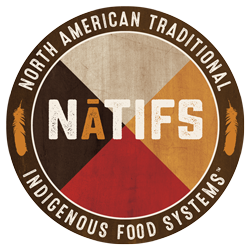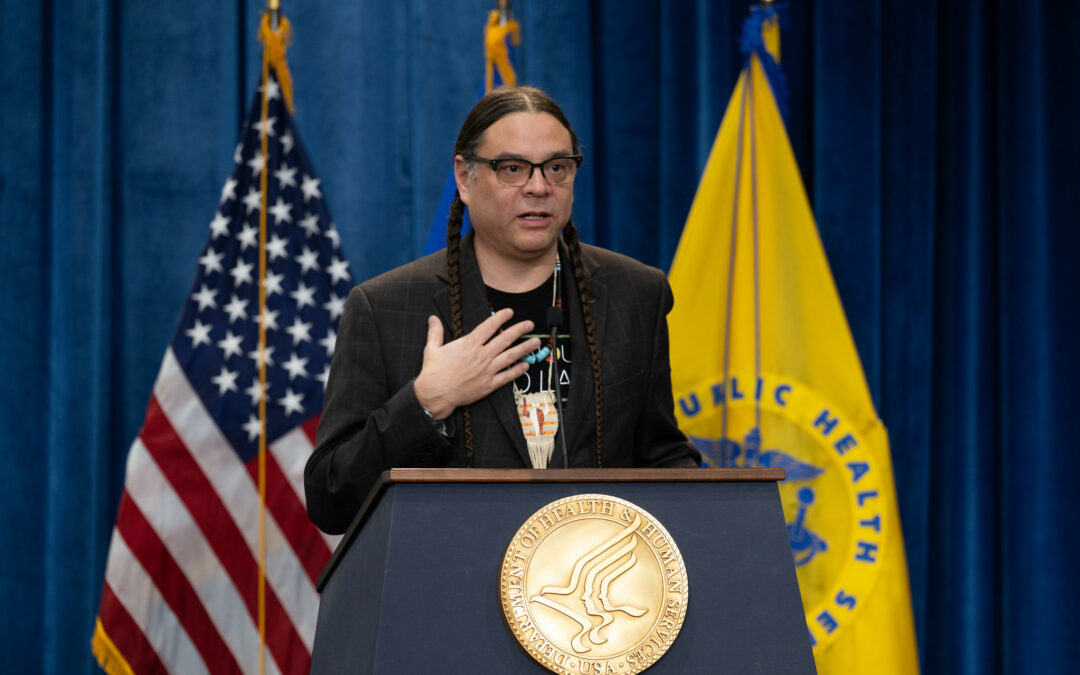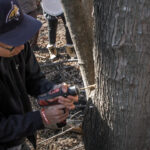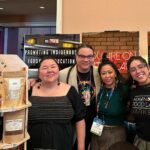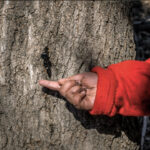In January, Sean was invited to the first-ever US Department of Health and Human Services “Food is Medicine” Summit in Washington DC, where stakeholders discussed the intersection between food and health. Sean was invited to present a talk, as well as moderate a panel.
The White House has instituted a National Strategy on Hunger, Nutrition, and Health to reduce the prevalence of chronic disease in the United States. Sean offers a crucial Indigenous perspective on health and nutrition, promoting traditional Native American foodways as a path towards better health for all.
The panel was also attended by USDA Secretary Tom Vilsack, Health and Human Services Secretary Xavier Becerra, and Dr. Maria Rosario Jackson, Chair of the National Endowment for the Arts.
“These are really powerful leaders to have a long overdue conversation with,” Sean said of his involvement in the day. “Food as medicine is something that’s in line with everything we do at NATIFS because we really believe in preventative health care and culturally appropriate nutrition, instead of trying to fix health issues after the fact. People in the HHS and USDA have a lot of power when it comes to food access and food system work in the US, so this was a great inaugural conference of people to get together to strategize about systematic changes that could lead us toward positive health outcomes in tribal communities and beyond.”
The federal government has distributed rations to tribal communities since the 1800s, the large majority of it without cultural significance and with very little nutritional value. The UDSA commodity food program has infamously failed Native American and reservation communities all over the country, contributing to poor health outcomes including obesity and diabetes epidemics that Native communities continue to struggle with to the present day.
“The current commodity food program has nothing to do with our culturally relevant foods,” Sean continued, “and this is causing a lot of issues for our tribal communities.”
But he said that it’s “a good step” for the government to be reaching out to leaders such as himself to discuss food as medicine, which is an inherent value of Indigenous foodways. Governmental connections are one path towards solidifying the work that NATIFS continues to do daily, and making broad changes on a policy level is a deeply held ambition and intention for Sean and the organization.
His attendance at the conference also helped NATIFS make connections with other sectors that have a vested interest in food as medicine, including private sector companies like Instacart, who were also in attendance, as well as funders like the Rockefeller Foundation and Feeding America, who support governmental nutrition goals.
“It’s important that there were voices in attendance that weren’t just big corporations lobbying the government,” Sean explains. “That there are grassroots voices invited. It’s important that the government not just be swayed by big money and big corporations. Some of us are really working towards social change, and overall, this conference created a really good thematic focus on this subject. It’s hard to know exactly how change happens in DC, but I feel like our presence opens up inroads to meet the right people who have the influence to hopefully make the right changes for the future.”
NATIFS continues to participate in the USDA’s Indigenous Food Sovereignty Initiative. The initiative supports the restoration of traditional Indigenous foodways, empowers Indigenous agricultural economies, and seeks to improve Indigenous health through Indigenous nutrition.
View the full event livestream below
Sean’s talk begins at 5:45 and the panel begins at 16:53 of the first recording.
